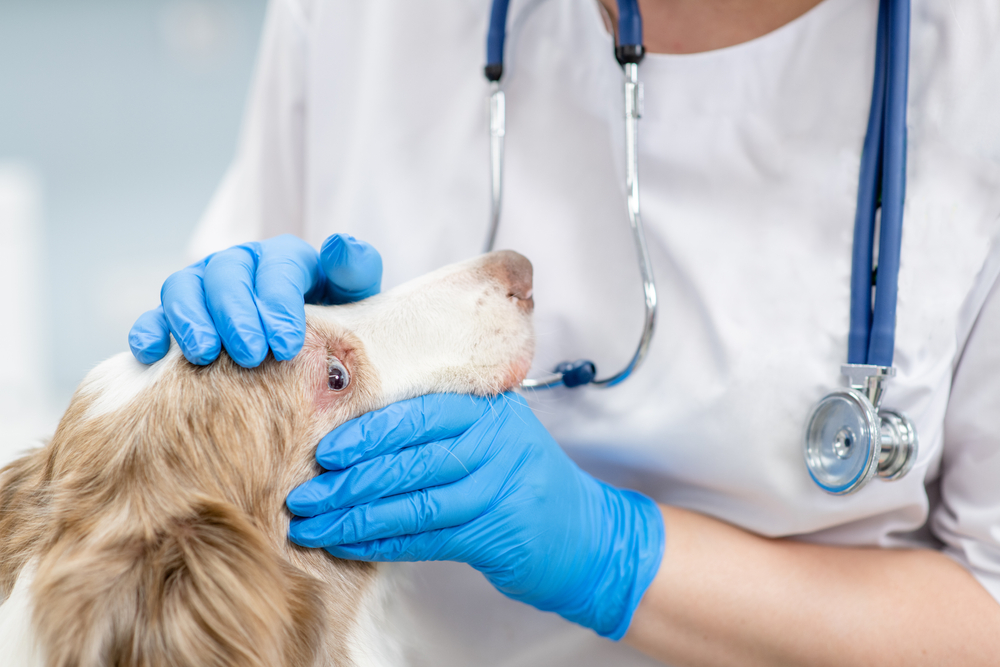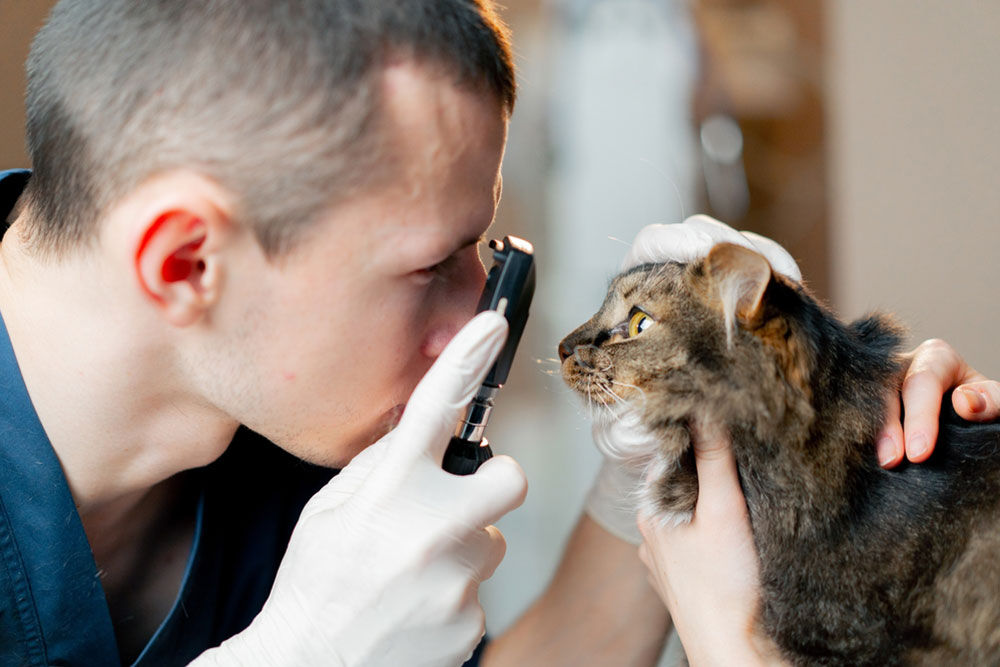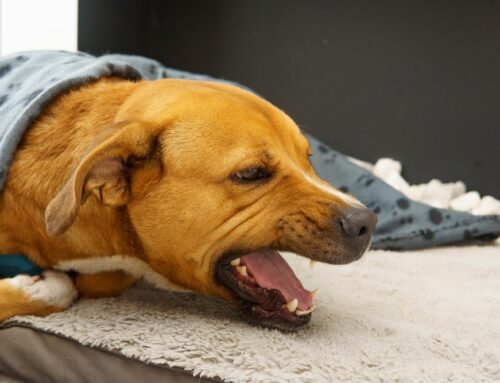From Cataracts to Conjunctivitis: A Pet Owner’s Guide to Eye Health
You go to bed and everything seems fine, but by morning your pet is squinting, pawing at their eye, or refusing to come out from under the bed. Eye problems in pets often appear suddenly and can worsen in just hours. What looks like mild irritation may actually be the start of a painful condition that threatens your pet’s sight. From corneal ulcers and conjunctivitis to glaucoma and cataracts, these issues require swift attention to protect both comfort and vision.
At Wales Animal Clinic in Wales, WI, our veterinarians understand that every pet is unique. We emphasize a personal approach to care, tailoring diagnostics and treatment to each patient while supporting families with compassionate, gold-standard veterinary medicine. When it comes to eye health, acting quickly is the best way to safeguard both comfort and sight.
Understanding Common Eye Problems in Pets
Eye problems in dogs, cats, and exotic pets often start subtly but can progress rapidly. Learning to recognize the signs and knowing which conditions require immediate veterinary care can make all the difference.
Recognizing Eye Pain and Discomfort
Eye pain can be difficult to spot because pets often mask discomfort. The signs of eye pain may appear as:
- Squinting or excessive blinking
- Pawing at the eye or rubbing the face on surfaces
- Avoiding light or seeking dark spaces
- Redness, swelling, or unusual discharge
- Behavior changes such as irritability, lethargy, or decreased appetite
Because these signs can indicate anything from mild irritation to an emergency, it is important to schedule a diagnostic exam as soon as possible.
Common Conditions and Their Causes
Corneal Ulcers
Corneal ulcers are painful open wounds on the transparent surface of the eye. They can develop from trauma, foreign bodies, infections, or diseases that compromise the corneal surface.
Symptoms include squinting, redness, tearing, and sensitivity to light. Pets may resist being touched around the face.
Treatment often involves antibiotic drops, pain management, and an Elizabethan collar to prevent rubbing. Severe or deep ulcers may require surgical care to preserve the eye. Without prompt attention, corneal ulcers can deepen, rupture, and cause permanent vision loss.
Conjunctivitis
Conjunctivitis is the inflammation of the thin tissue covering the white of the eye and inner eyelids. It can be caused by irritants, allergens, bacteria, or viruses.
Signs include redness, swelling, squinting, and discharge. Clear discharge often indicates allergies, while yellow or green discharge may point to bacterial infections.
Treatment depends on the underlying cause. Antibiotics, anti-inflammatory medications, or environmental adjustments may be prescribed. Chronic or untreated conjunctivitis can lead to long-term discomfort or scarring.
Cherry Eye
Cherry eye occurs when the tear gland in the third eyelid prolapses, creating a red mass in the corner of the eye. While not always painful, it can cause irritation, tearing, and eventually lead to dry eye.
Treatment usually involves surgery to reposition the gland rather than removing it. Preserving the gland helps maintain normal tear production and long-term eye health.
Glaucoma
Glaucoma is a serious condition caused by increased pressure inside the eye. This pressure damages the optic nerve and can cause blindness within hours if untreated.
Symptoms may include redness, cloudiness, an enlarged pupil, or behavior changes such as reluctance to play. Because glaucoma is extremely painful, pets often show signs of distress.
Immediate care is essential. At Wales Animal Clinic, we use advanced diagnostics such as tonometry to measure eye pressure and detect glaucoma early.
Cataracts vs. Nuclear Sclerosis
Cloudy eyes are not always cataracts. Cataracts and nuclear sclerosis are often confused but are very different.
- Nuclear sclerosis appears as a bluish haze in the lens. It is a normal aging change and usually has little impact on vision.
- Cataracts appear as white or opaque spots in the lens that block light and impair vision. They can result from age, diabetes, trauma, or genetics.
While nuclear sclerosis does not require treatment, cataracts may need surgical removal to restore sight. If surgery is not an option, environmental adjustments such as consistent furniture placement and verbal cues help affected pets navigate safely.
Dry Eye (Keratoconjunctivitis Sicca)
Dry eye develops when the tear glands do not produce enough tears to keep the eye lubricated. This leaves the cornea vulnerable to irritation, infections, and damage.
Signs include thick, sticky discharge, recurrent conjunctivitis, and a dull or dry appearance of the cornea.
Treatment usually involves lifelong tear-stimulating medications and lubricating drops. Regular monitoring ensures that the condition remains under control and that vision is protected.
Breed-Specific and Hereditary Concerns
Some eye problems are linked to genetics or breed-specific anatomy, making certain dogs more vulnerable to vision issues.
- Hereditary eye disease includes conditions such as progressive retinal atrophy (PRA) and inherited cataracts. PRA is especially common in breeds like Collies, Cocker Spaniels, and Labrador Retrievers, while inherited cataracts frequently affect Poodles, Siberian Huskies, and Golden Retrievers.
- Pannus is common in German Shepherds, Belgian Tervurens, and Greyhounds. This immune-mediated disease causes chronic inflammation across the cornea and worsens with UV exposure, especially at higher altitudes.
- Entropion occurs when the eyelid rolls inward, allowing lashes to rub on the cornea. Breeds predisposed to entropion include Shar-Peis, Bulldogs, Chow Chows, and Rottweilers. The condition is painful and usually requires surgical correction to protect long-term vision.
- Lens dislocation is a painful condition where the lens shifts out of place, sometimes leading to glaucoma. Terriers, such as Jack Russell Terriers and Wire Fox Terriers, are especially predisposed due to inherited weaknesses in the eye’s supporting structures.
Because some of these conditions may not appear until middle or senior age, regular wellness exams are essential for monitoring eye health and detecting changes early.
Urgent Eye Care Needs
When to Seek Immediate Veterinary Attention
Recognizing eye emergencies can save your pet’s vision. Warning signs include:
- Sudden severe redness or swelling
- Penetrating injuries or chemical exposure
- Visible foreign bodies such as foxtails
- Swelling, blood in the eye, or uneven pupils
- Sudden severe pain or blindness
These situations require immediate evaluation. Call Wales Animal Clinic at (262) 968-2507 for urgent guidance.
Managing Sudden Vision Changes
Acute blindness in dogs can sometimes be reversed if treated quickly. Other conditions, such as Sudden Acquired Retinal Degeneration Syndrome, cause rapid and permanent vision loss.
Cats may also experience sudden vision problems such as hypertension-induced retinal detachment. Regular blood pressure monitoring is especially important for senior cats.
Subtle signs of vision loss include bumping into furniture, hesitation on stairs, or reluctance in dim light. If you notice these changes, schedule an exam promptly.
Routine Eye Care and Preventive Measures
Importance of Regular Check-Ups
Routine wellness visits are vital for catching problems before they become serious. Comprehensive exams allow veterinarians to check for early signs of glaucoma, cataracts, or retinal disease.
At Wales Animal Clinic, we use advanced diagnostics such as digital radiography, ultrasound, and tonometry to evaluate eye structures and monitor internal health. These tools help us identify hidden problems early, ensuring timely treatment.

Treatment Options and Surgery
Medical and At-Home Therapies
Not every eye condition requires surgery. Many respond to medications such as antibiotics, anti-inflammatories, or lubricating drops. Administering these correctly is essential for success. Learn proper techniques with this guide to giving eye medications so treatments are safe, effective, and as stress-free as possible for both you and your pet.
Surgical Interventions
Some eye conditions require surgical correction. At Wales Animal Clinic, our surgical team performs procedures for entropion, cherry eye, and trauma-related injuries.
With advanced anesthesia protocols and careful aftercare, most pets recover well and experience improved comfort and vision.
Protecting Your Pet’s Vision
Squinting, tearing, or redness should never be ignored. Early recognition and timely veterinary care can prevent complications and protect your pet’s quality of life.
At Wales Animal Clinic, our experienced team provides compassionate care for dogs, cats, and exotic pets, treating every patient like family. Whether your pet needs a routine wellness exam, advanced diagnostics, or urgent treatment, we are here to help.
Call us at (262) 968-2507 or contact us to schedule an appointment. Together, we can keep your pet’s eyes clear, bright, and comfortable.







Leave A Comment